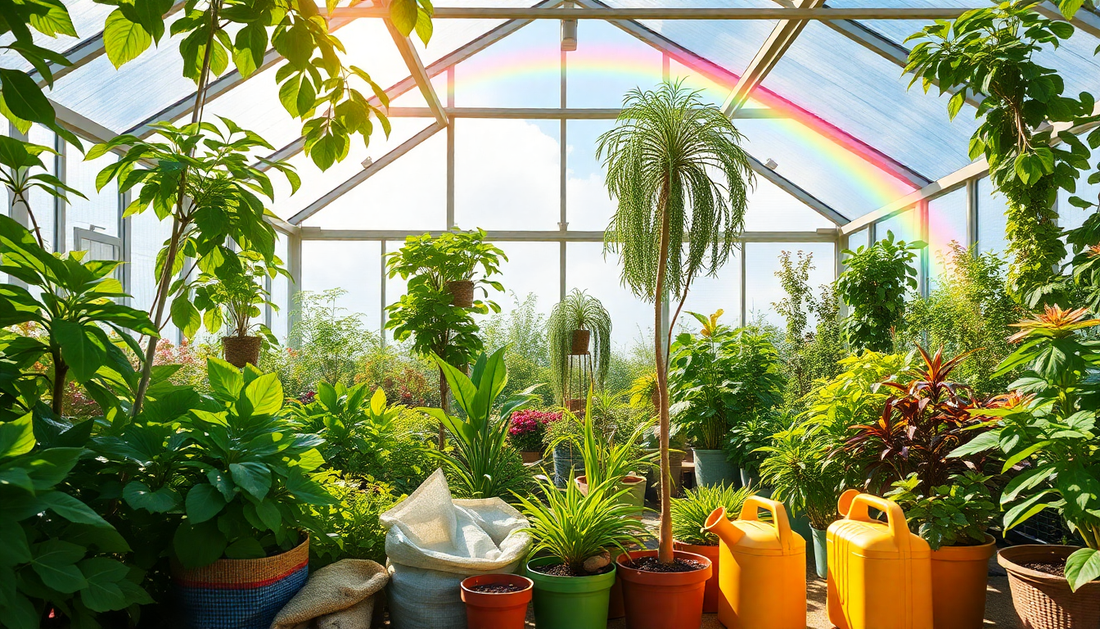
What Is Everything Plants Need to Thrive?
Understanding the Basics of Plant Needs
Plants are fascinating creatures that, although stationary, are vibrant and alive, carrying out processes crucial for their survival and ours. To ensure optimal growth, all plants require a few fundamental resources that are surprisingly easy to provide once you understand what they need. At the most basic level, plants need light, water, air, nutrients, and space to grow. Each of these elements has its importance and role in a plant's lifecycle, dictating how well they thrive.
Let's begin with light, often considered the most critical factor for plant growth. Plants perform photosynthesis, a process where they convert sunlight, carbon dioxide, and water into glucose and oxygen. Without adequate light, photosynthesis cannot occur, stunting growth or even leading to the death of the plant. Different plants have varying light requirements; some thrive in full sunlight while others prefer the shade. Understanding your plants' light needs is the first step to providing a nurturing environment.
Next is water, another crucial component. Water aids in photosynthesis, but it's also involved in nutrient absorption and helps maintain plant structure. Overwatering or underwatering can lead to root rot or dehydration, respectively. Finding the right balance can be tricky but observing your plant's soil and response will guide you.
The Role of Air and Carbon Dioxide
Air is essential for plant respiration. Plants absorb carbon dioxide from the air, which is necessary for photosynthesis. While outdoor plants typically have access to ample CO2, indoor plants may suffer from a lack of fresh air if the environment is poorly ventilated. Ensuring plants have access to clean air will result in healthier growth.
Air also plays a vital role in transpiration, which is the process of water movement through a plant and its evaporation from leaves, stems, and flowers. This helps in nutrient distribution and cooling the plant. Poor air circulation can lead to diseases, especially in dense plantings or with high humidity. Hence, ensuring a gentle flow of air is crucial for maintaining plant health.
The Importance of Nutrients in Soil
Soil quality and nutrients are pivotal in plant growth. Nutrients are to plants what food is to humans. The essential nutrients that plants need include nitrogen, phosphorus, and potassium, often referred to as NPK fertilizers. In addition to these macronutrients, plants also require micronutrients like calcium, magnesium, iron, copper, and zinc, although in smaller quantities.
A lack of key nutrients results in nutrient deficiencies, visible through yellowing leaves or stunted growth. While many gardeners rely on commercial fertilizers to boost nutrient levels, natural alternatives like compost and well-rotted manure are excellent sustainable choices for enriching the soil.
Space and its Impact on Growth
Space is an often overlooked yet vital factor in a plant's health. Plants need room to grow, which means adequate spacing between them to prevent competition for light, water, and nutrients. Overcrowding can lead to poor air circulation, increasing the risk of disease and pest infestations.
For root development, ensuring enough space helps in anchoring the plant and aids in efficient nutrient and water uptake. When planting, always consider the mature size of the plant and space them accordingly to avoid future complications.
Final Thoughts on Plant Care
Understanding what is everything plants need can seem complex, but breaking it down to light, water, air, nutrients, and space simplifies the process. With this knowledge, you're well-equipped to nurture any plant type, whether you're a budding gardener or an indoor plant enthusiast. Pay attention to each element; your plants will reward you with vibrant growth and health.
Remember, just as each plant type has different requirements, attention to these needs can make your green space flourish. Combine your knowledge with experience, and you'll find gardening to be a rewarding hobby that offers beauty and serene spaces, both indoors and out.
